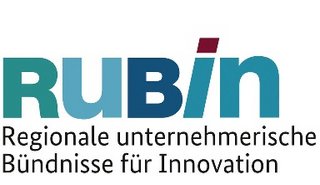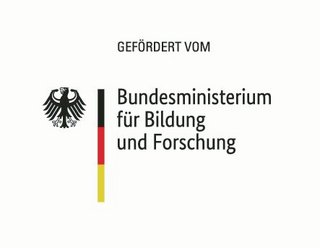"phoTECH - Photonic processes as a technological basis for cleaning indoor air, industrial air, biogenic air and urban air"
Project funding:
RUBIN-Alliance, Federal Ministry of Education and Research (BMBF)
Project duration: 08/2023 - 07/2026
Alliance partner:
- Lynatox GmbH - Katalytische Gewässer- und Luftreinigung
- IVOC-X GmbH Clean Air
- Materialforschungs- und -prüfanstalt an der Bauhaus Universität Weimar (MFPA)
- Bauhaus Universität Weimar (BUW)
- Hochschule Hof (HS Hof)
- Fachhochschule Erfurt (FHE)
- Fachhochschule Potsdam (FH;P)
- Synantik GmbH – Industrielle Mess- und Regeltechnik
- CE-SYS Engineering GmbH
- Integromed GmbH
- Purventus GmbH
- Metall- & Lüftungsbau Holger Chemnitz GmbH
- Lufttechnik Crimmitschau GmbH (LTC)
- Kutter Spezialstraßenbau GmbH & Co. KG
- Leipziger Leuchten GmbH
- Kubra GmbH – Industrie- und Kunstofftechnik
- Co-Creation GmbH
Background
Air is an essential and vital resource that is worth protecting. Numerous studies have shown the effects of poor air quality on human health, the climate and the environment. According to the WHO, around 7 million people worldwide die every year in connection with polluted indoor and outdoor air. Cardiovascular diseases, chronic and acute respiratory diseases, strokes and asthma can often be attributed to polluted air and are now widespread diseases in emerging and industrialized countries. Although air pollution in Germany has decreased significantly in recent years as a result of numerous emission-reducing measures due to stricter limit values, particularly in the areas of industry, traffic and private households, high concentrations of particulate matter and nitrogen dioxide, for example, are still a major, unresolved problem, particularly in inner-city areas. In addition to negative health effects, air pollutants often also have a direct or indirect impact on the climate and the environment. For example, soot particles have a warming effect on the climate, while nitrogen oxides form the third most important greenhouse gas, ozone. In addition to energy and process-related emissions, agriculture also makes a substantial contribution to greenhouse gas emissions, primarily through climate-relevant gases such as methane and nitrous oxide (laughing gas) from livestock farming or as a result of fertilization (mineral and organic). The reduction of these gases and the efficient use of resources is therefore a central element of national and international efforts.
Project objective and approach
The aim of the RUBIN alliance phoTECH is to bundle innovative photonic methods for oxidative air purification and air disinfection. The aim is to develop system solutions with high application potential and implement them as demonstrators in various areas of air purification. The focus is on a modular, adaptable and preferably multifunctional process chain for sustainable operation in the respective compartments. The Chair of Resource Management is involved in the two sub-projects "Biogenic exhaust air" and "Urban air".
Joint project 3 - Subproject 5
The aim of the joint project 3.5 "Biogenic exhaust air" is to develop modular photonic system solutions for the treatment of relevant pollutant mixtures from biogenic sources and to quantify their effectiveness. The BUW's main contribution here lies in the experimental support of successive development work with a strong focus on the treatment of biogenic exhaust air streams. Through continuous performance characterization and assessment, significant development potential can be addressed during the course of the project and an optimal fusion of the technical expertise of all industrial partners is possible. The BUW's main areas of work in the joint project are:
- Determination of technical specifications and framework conditions
- Preliminary tests on a small scale
- Experimental reactor parameterization
- Feasibility studies and identification of obstacles
- Trials on a semi-industrial scale
- Trial operation of laboratory sample and prototype plants
- Derivation of the framework conditions for upscaling
- Economic efficiency, LCA, life cycle assessments in comparison to conventional systems
- Publication of the results to establish technical potential in specialist circles
Joint project 4 - Subproject 2
The aim of the joint project 4.2 "Urban air - Active systems" is to create a treatment option for air pollution in urban areas by integrating photonic processes into urban infrastructure. The BUW is contributing to the achievement of this goal through experimental tests, modeling and evaluation work in the field of active systems. The BUW has the following main areas of work in the joint project:
- Determination of pollutant inventory and assessment of potential
- Laboratory-scale tests for reactor parameterization
- Identification of obstacles and development priorities
- Derivation of the framework conditions for up-scaling
- Development of methods to prove effectiveness
- Economic efficiency, LCA, life cycle assessments in comparison with conventional systems
- Publication of the results to establish technical potential in specialist circles
The BUW also carries out the following research work in the field of knowledge transfer (Joint project 5):
- Development of project-relevant educational offerings or transfer of project-immanent knowledge into existing educational offerings (university courses) with the aim of opening up these courses and digitally integrating new teaching formats and tools.


